Meanwhile, in Ireland: Samhain Stories and Spooks
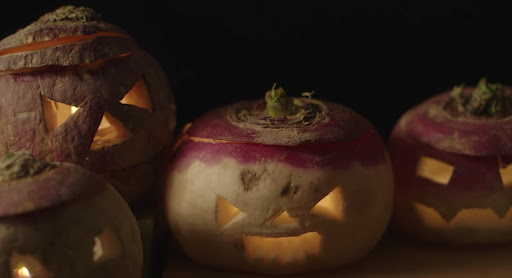
from peewee.com
The following are a collection of Samhain stories and Irish ghost stories for your enjoyment and entertainment this Halloween.
The Cattle Raid of Cooley
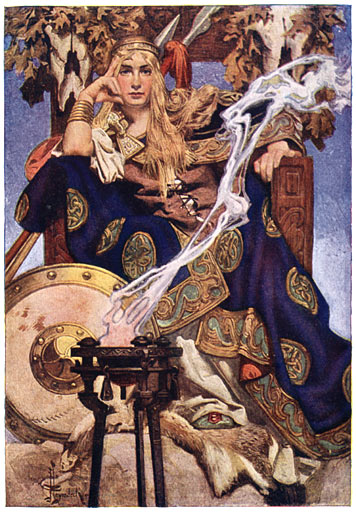
Of all the tales of Samhain passed, none is more darkly comedic than the story of the Cattle Raid of Cooley.
The Cattle Raid began because of a marital disagreement between Queen Medb of Connacht (Pronounced like Meave of Koh+Not) and Ailill Mac Mata (Pronounced Ah+Leel Mahk Mah+tuh), her fourth and longest husband. They often found themselves at odds with each other, comparing their wealth and constantly trying to out-do the other. Then one evening, in one of these matches of comparison, Medb told Ailill she had the best bull in all of the land, however, he protested this. Upon going out to the fields, Medb was shocked to find her prized bull had escaped her fields and had gone to Ailill’s herd!
Furious, Medb turned her eyes toward Ulster, to a man named Dáire Mac Fiachna (Pronounced Dahr+uh Mahk Feek+nuh), the owner of the only other bull in the land of the same worth as Ailill’s. This bull was called Donn Cuailgne (Pronounced like Don Cooley). This posed a bit of a problem to Medb, however, as Mac Fiachna was the head guard of King Conchobar Mac Nessa (Pronounced like Kon+Oar Mak Ney+suh), the King of Ulster and Medb’s first husband whom she despised, and who despised her in return. At first, Medb attempted to buy the bull off of Mac Fiachna, sending messengers north in her place. After seemingly convincing Mac Fiachna to rent his bull to Medb, however, one of her messengers got drunk and let it slip that Medb had actually intended to take the bull by force. Angered that Medb would dare attack Ulster, he sent her messengers back to her with the proclamation of war. If Medb wanted that bull, she would indeed have to take it by force.
And so began an incredibly bloody war which began on Samhain night. The struggle led to many deaths for both armies, Ulster and Connacht, but in the end, Medb managed to capture Donn Cuailgne and flee back to the Rathcroghan in Connacht. Perhaps the most tragic part of the entire story, however, happened after they returned to Connacht. Medb put the bull into the herd, but Ailill’s bull broke through the fence and his prized bull and Donn Cuailgne killed each other. Essentially, the entire raid was for nothing.
The Morrígan
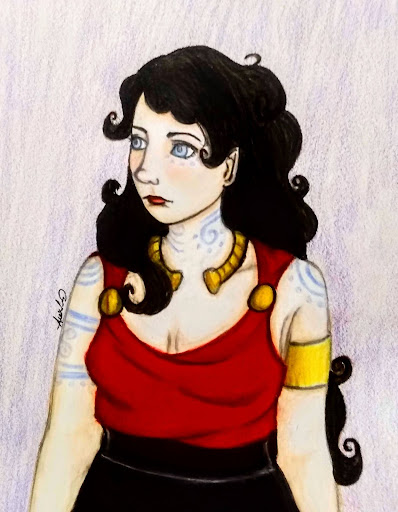
The Morrígan (More+EE+gun), known as The Great Phantom Queen and Goddess of War, Death, and Fate, allied herself to the kingdom of Connacht on the west coast of Ireland. The Morrígan was a shape changer, most famously for her raven, or hooded crow, form. She was not limited to this form alone.
It is said that during the Cattle Raid of Cooley, The Morrígan saw the desolation of the warriors of Connacht by the hero of Ulster, Cú Chulainn (Koo Koo+layn). And so she went to him. Firstly she attempted to seduce him, however, despite her great beauty, Cú Chulainn resisted. This sent The Morrígan into an outrage, and so she transformed herself into an eel with the intention of tripping Cú Chulainn. He quickly recovered and lashed out at the eel, breaking her ribs. The Morrígan then transformed herself into a wolf and startled a nearby herd of cows, sending them stampeding toward Cú Chulainn. He shot a rock from his slingshot, hitting the Morrígan in the eye, blinding her on that side. Once more, She transformed herself, this time into a heifer. In this form, she led the stampede again, but once more, Cú Chulainn fired his slingshot, breaking her leg and forcing her to retreat. This surrender was one she would never forget.
Cú Chulainn found himself in the presence of an old hag, blinded in one eye, with broken ribs and a deformed leg. Despite having been the one to inflict such wounds, Cú Chulainn did not recognize the hag to be the Morrígan. Taking advantage, she tricked Cú Chulainn into drinking some milk. Every sip he took he blessed her for her kindness, and with each blessing, The Morrígan’s wounds healed. The Morrígan had reclaimed her victory.
This would not be their final meeting, for in the days before his death Cú Chulainn came across an old woman washing bloodstained armor in the river. It is this part of the legend which birthed the legend of the Banshee.
They had met some years prior. Cú Chulainn was walking in the woods when he came across The Morrígan. Being arrogant, he scoffed at the famed warrior, telling her that she was not so great and certainly not as great as he. The Morrígan did not take this insult lightly, and so then and there she cursed him, saying that on the day that he dies, she would be the one to bring it upon him, and the last thing that he sees before he dies would be her. Not taking her seriously, he left and went on his way.
During the fighting of the Cattle Raid, Cú Chulainn proved himself to be a formidable opponent to the army of Connacht. He was the only one unaffected by a curse put on the men of Ulster by Macha (Mah+Kuh), one of the sisters of The Morrígan. Macha had been forced to run against the best charioteer in Ulster by King Conchobar Mac Nessa. The only problem was, she was heavily pregnant with twins. She ran anyway, and to Mac Nessa’s amazement, won. But she collapsed on the finish line and delivered her twins. With her dying breath as exhaustion consumed her, she placed a curse on Ulster, that the men would become weak and be unable to lift their arms or run. He had been elsewhere so Cú Chulainn found himself unaffected by this curse. Being incredibly skilled as a warrior, he decimated Queen Medb’s army with little ease.
The Morrígan sided with Connacht, and with her help, the tide of the conflict turned in their favor. Cú Chulainn, on the night before the battle would end, found himself again wandering through the woods. He came across three hags cooking some sort of stew. They kindly invited him to sit, rest, and eat. He did so gladly, having indeed been weary from the long battle. He sat down and took a bowl of the stew, gladly eating what they had given him. Only after he had finished, though, did they tell him what the stew was. He vowed never to eat dog meat, and if he had he would die. The old women tricked him into eating the dog meat stew, then revealed themselves as The Morrígan. The next morning, Cú Chulainn was brought down at the hands of the Connacht army. With his guts spilling out, he tied himself to a flagstone so he would not die laying down… As his life slowly faded, a large Raven came out from the trees and landed on his shoulder… The Morrígan lived up to her promise and she was indeed the last thing he saw before dying.
This was the last day of the Cattle Raid.
The Dullahan: Behind the Headless Horseman

A figure thunders on horseback, disturbing the darkness. Flowing black robes, horse as black as night with eyes that burn like hellfire, head removed from the shoulders and carried in the hand, and death wherever he goes. A man from Galway one night went walking. On his way home, the quiet of the night was sharply broken by the sounds of hooves thundering closer and closer. Terrified, he turned around, only to be met with the sight of the Dullahan. The instinct of fear to flee overtook him, but death itself cannot be outrun, as they say. Realizing that he could not outrun the Dullahan, he resolved to instead outsmart him and so he reached into his pocket. Out he pulled a single gold coin and dropped it as he continued to run.
A loud roaring sound rang out then…
Silence.
The man stopped running and turned around once more. He was alone.
Perhaps images of a more familiar rendition come to mind. Indeed, the legends of a Headless Horseman of Sleepy Hollow were inspired by the Dullahan. He himself is said to be the manifestation of the spirit of pure darkness and malice, Crom Cruach, or Crom Dubh (Pronounced Krom Kroo+Ach or Krom Doov). Should you cross him, you best hope and pray he doesn’t call your name, for if he does, your soul will be ripped from your body and death, the Dullahan, will take you from the mortal realms.
Leap Castle: Bathed in Blood

Nestled in the countryside of County Offaly stands a castle haunted by the blood that stains it. Owned most famously by the O’Carroll Clan, Leap Castle (Pronounced Lehp) is filled with tragedy and conflict, and the memories of the past perhaps never left, and by creatures beyond both this world and the Otherworld. Lurking in the castle is a creature simply referred to as “It.” This horrifying entity is said to be no bigger than a sheep, crawling on all fours with a face bearing deep decay. With it, it carries the scent of sulfur and death as it stalks the halls. Supposedly, It is what remains from years of murder in a pit filled with spikes, where captured enemies of the O’Carroll clan would be thrown. Hundreds of human bones were found in this pit, though they have since been relocated and the pit is typically kept covered.
Another of these entities is the Elemental. It is said that it was created thousands of years ago by a group of Druids to curse the land. They are created by the energy of the elements of nature, as the folklore says, though some say they come from malice and negativity, not dissimilar to poltergeists. The Elemental is often described as being much the same as “It.” No one knows for sure what an Elemental is, except for the general consensus that it is beyond even the supernatural beings, and was something even they feared.
Beyond the mythologically based stories that are forever bound to this castle are stories of its dark history. The O’Carroll Clan were notoriously bloody and often were at war with themselves. Two brothers particularly had a rather nasty feud. While the first brother, the less hot-headed of the two, led Mass for some of their other family members, the second brother took his sword up. He went into the chapel and as his brother preached, he came up behind him. Through the chest, he plunged his sword, and his brother fell onto the altar. The murder of the first brother christened the chapel “The Bloody Chapel.” It was here that the spiked pit was also found, and it is said the chapel is forever haunted by the ghost of the first brother, and the souls from the pit.
King Abhartach: The Irish Vampire
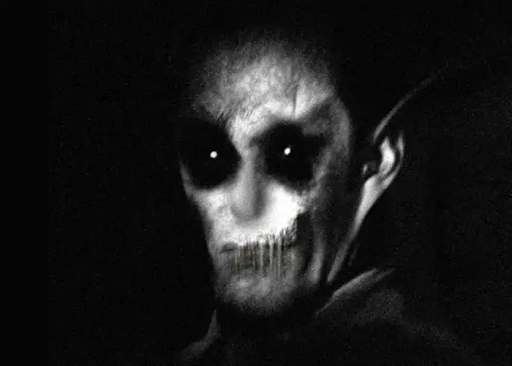
There once lived a jealous king named Abhartach. Abhartach was convinced that his wife had been cheating on him, so one night, he climbed out the bedroom window and onto the ledge, hoping to catch her in the act. However, he lost his footing and plummeted to the ground. He was buried standing upright, as done for all chieftains, however by twilight the following day, his grave was discovered to be empty. Abhartach had risen once again. He went to the villagers and demanded they each give him a bowl of their blood to drink, and that they feed him like this every day. Terrified of him and this evil corruption of the dead, they complied.
Soon, they grew weary of this, so they turned to the chieftain of the Cathán Clan (Kay+Awn), now O’Kane. Over and over he would slay Abhartach and bury him again, but despite this, Abhartach kept rising. Each time, he grew more and more enraged, and demanded more and more blood. So again, they called upon Chieftain Cathán. Having tried to slay the undead man several times, he called upon the aid of a Druid. This Druid advised him, saying that the only way to truly slay him would be to stab him with a sword made from the wood of a sacred yew tree, then bury him upside down and place a large stone over his grave and surround it with the branches of the sacred trees, such as oak, hawthorn, and rowan. This would prevent his rising.
After doing so, the branches magically took root, and began to grow into a great thorn tree. The villagers he tormented built a dolmen over where Abhartach had been buried as a reminder to all, so that he may never be released. The dolmen no longer stands, save one stone, but the tree of thorns still stands as a guard.
Well before finding interest in eastern European vampires and stories of men like Vlad the Impaler, Bram Stoker, a Dublin native, would have certainly crossed paths with the story of Abhartach, as it was collected and cast to the masses in the late 19th century while Stoker was still there. It is believed that Abhartach was the initial inspiration for Dracula. Of course the setting and characterizations that became his gothic novel were drawn from figures of Transylvanian origin, but there was a prior inspiration that is said to have spawned this interest in blood-suckers… King Abhartach.
Caer and Aengus: The Princess of Swans
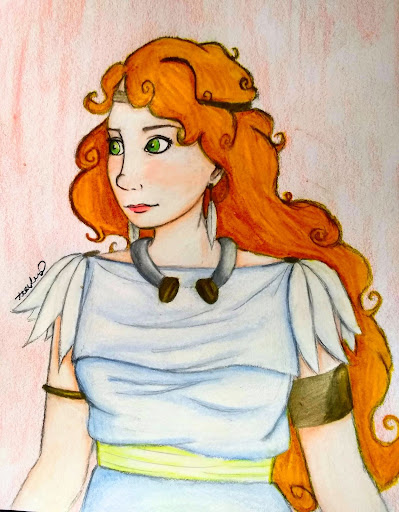
Caer Ibormeith (Pronounced Kare Ee+bore+mee), the Goddess of dreams, once came to Aengus Óg (Pronounced En+gus Ock) in his dreams. Aengus found himself tormented by the mystery of who this woman was he kept seeing in his dreams. She came to him playing her enchanted harp, singing to him and calling for him to find her.
His determination to find this woman began to drive him mad so his mother, Boann, the goddess of the River Boyne, resolved that the only way to help her son was to aid his quest to find her. So they traveled across Ireland to Connacht and requested an audience with Queen Medb. Medb told them that he must be talking about Caer Ibormeith, but that she knew not where Caer could be found. Medb’s husband, Ailill Mac Mata, however, knew where Caer’s father could be found.
Upon meeting, Caer’s father informed them where she could be found, but she, a strong willed and independent woman, could only be given in marriage by her own accord, and thus, he could not grant Aengus her hand. He said then that the only way Aengus could win her hand was to find her and call out to her specifically. However, this wasn’t simple, because Caer and her 50 maidens would all transform into swans on Samhain night and would remain as such for one year, then become human for another year, and so on.
So Aengus set out to the lough (Pronounced Low) where Caer’s father said she would be, and found the swans, all identical with silver chains about their necks. It seemed like an impossible task… But then he saw her, the one swan with a gold chain rather than a silver one. He ran farther into the water, calling to her, and she swam to him, transforming into the beautiful woman who had visited him in his dreams. She teased him, asking what took him so long to find her, and the two, hand in hand, returned to the water where they both transformed into swans. From the Lake, they flew back across Ireland to Tara, and it is said that the song they sang was enchanted, putting any who heard it into a three year sleep. When they would awaken, any ailments they had would be healed. It is said that sometimes, if you follow their path on Samhain night, and listen close enough, their song can still be heard, echoing through time.
The Curse of Loftus Hall

Centuries ago, Loftus Hall, in County Waterford, stood as the home of the Loftus family. For a time, the Tottenham family held residency there. One particularly stormy night, there was a knocking at the door. THUMP, THUMP, THUMP! Mrs. Tottenham answered. There before her stood a man, wrapped in a cloak. He begged to come in from the storm and feeling pity for the man, she gestured for him to enter. Thanking Mrs. Tottenham for her hospitality and kindness, he went to warm himself by the fire. She inquired where he had come from, as he didn’t sound like he was from these parts, and he replied that he was a merchant, but his ship had wrecked in the storm, leaving him as the only survivor.
Well, Anne, the daughter of the Tottenham family, had overheard this and grew smitten with the traveler, intrigued by the stories he must have. He was meant to stay the night. But one night turned into one week, one week into one month, and all the while, he and Anne Tottenham had grown close, and an intense affair ensued. The family continued to host their guest, despite the suspicions spawning from the lack of evidence of any shipwreck having occurred anywhere near there. Still, they ignored this, and simply carried on to enjoy the glad company of their guest.
One night, they sat down in the parlor for a game of cards. All was well and merry, as it had been. But dark clouds began to roll in again. Still all was merry. The fire in the hearth flickered and danced and the game went on. But then, Anne accidentally dropped one of her cards on the floor. She bent over to pick it up, but was left in horror when she saw that the legs of their guest, her lover, were not human at all. The man had goat hooves! She shot back up, her eyes meeting his. He sneered a wicked grin, then with laughter filled with all the greatest evils, he shot through the ceiling with the blazes of hellfire.
The guest was the Devil himself.
The family tried to forget but quickly found they couldn’t, for Anne had fallen pregnant. Panicked, Anne’s mother imprisoned her in the drawing room, where the child was born alone. Anne lost her mind in that room. Fearing that the child was the spawn of the Devil, Mr. and Mrs. Tottenham slayed the child and put its remains in the wall of the drawing room where Anne was imprisoned. Anne passed not long after, her madness consuming her.
It is said that Anne still wanders the halls, looking for her baby, joined by other specters forever trapped by the curse of Loftus Hall.
A haunting song calls out this night
As darkness fills the air
And the chiming grand clock in the ‘well
Sings that he shall cometh
Forth in this stately place
The Devil’s guest and spell.
One two three,
Knocks at the door
The cold hand of a traveler
Let not him in,
Or your threshold pass
For be it the witchin’ hour
Listen thus, the wind in morn’
This haunting song doth sing
For with him brings
In the Raven’s call
The curse of Loftus Hall.






